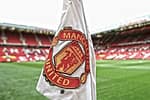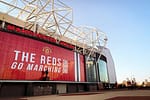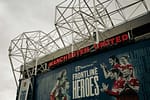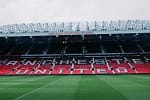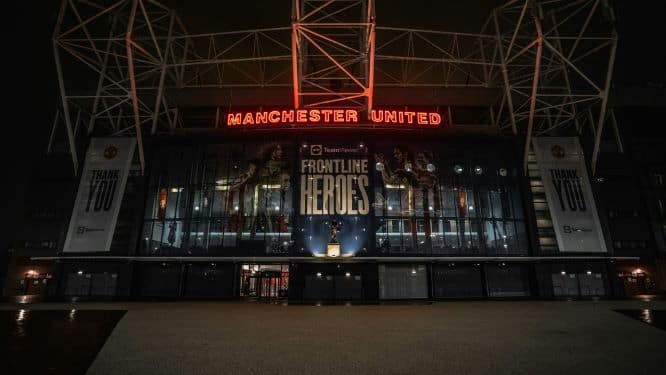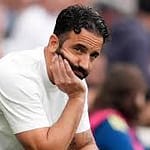The 2025 summer transfer window for Manchester United is a stark illustration of self-inflicted injuries in the high-stakes world of Premier League football, where every choice may affect a season. The Red Devils have pledged a “new era” of effectiveness and prosperity under the direction of INEOS, Sir Jim Ratcliffe’s conglomerate that assumed ownership of the team’s football activities in late 2023. But it’s evident that INEOS’s management of transfers has left United in chaos as the 2025–26 season begins amid growing annoyances.In addition to interfering with team training, late transactions, overpriced negotiations, and lost chances have exacerbated the club’s ongoing performance problems. Using the terrible summer window as a case study, let’s examine how INEOS’s management of football affairs is actively impeding Manchester United’s comeback. Continue reading for an honest, fact-based perspective.
The INEOS Promise: Efficiency or Illusion?
There was a collective sigh of relief among Manchester United supporters when INEOS paid £1.25 billion to purchase a 27.7% share in the team in December 2023. With more than £1 billion in interest payments since 2005 alone, the club has been drained dry by the Glazer family’s debt-ridden rule. A billionaire with experience in high-level sports like cycling and Formula 1, Ratcliffe promised to infuse United’s operations with data-driven discipline and brutal efficiency. In order to bring United back to the top, Sir Dave Brailsford, the sporting director of INEOS, was sent to evaluate the football department and advocate for a “marginal gains” strategy.
By September 2025, the situation has drastically changed. United did not qualify for Europe or win any hardware, finishing the 2024–25 Premier League season in a dismal 15th position, their lowest ever. In spite of United’s higher income (£666.5m in 2024–2025), INEOS has been merciless in its cost-cutting efforts off the field, laying off 250 employees in 2024 and another 100+ in early 2025. Concessions were eliminated and ticket prices were raised to £66 in the middle of the season. These actions provoked fan demonstrations and angered luminaries like Paul Scholes and Eric Cantona, who said that INEOS was “destroying” the club.
Critics contend that INEOS’s football operations are too simplistic for a team like United. Analytics advancement was halted when Brailsford’s audit fired current data teams without consulting them. Under football director Jason Wilcox, hiring has been reactive rather than innovative. And nowhere is this more clear than during the summer transfer window of 2025, when INEOS’s indecisiveness and penny-pinching transformed a great chance into a disaster.
Ruben Amorim’s Vision: A Manager Hamstrung from Day One.
After winning back-to-back Primeira Liga titles, Sporting CP’s golden kid, Ruben Amorim, moved to Old Trafford in November 2024. The inherited team sadly lacked the athletic wing-backs, dynamic midfield pivots, and clinical strikers that his 3-4-2-1 style requires. Amorim’s mid-season arrival prevented a proper preseason in 2024–2025, which led to United’s demise. Under him, the squad won just seven league games in 27 games, lost a derby to Manchester City 3–1, and made headlines for being the “worst team in history” following a Brighton loss.
Amorim had the opportunity to start over during the 2025 preseason. With victories over West Ham (2-1) and Bournemouth (4-1), as well as a Snapdragon Cup victory over Fiorentina, United’s U.S. trip showed promise. Players who followed rigorous off-season workouts returned fitter, according to sports science research. Amorim meticulously practiced his strategy, prioritizing left-footed wing-backs like Patrick Dorgu and forming back-threes with defenders like Harry Maguire and Matthijs de Ligt.
But this momentum was broken by INEOS’s transfer hesitancy. Arriving after the deadline on September 1, key arrivals completely missed the tour. “We need to fight during the week” for positions in Arsenal’s opening match, Amorim bemoaned after Fiorentina, but his fresh acquisitions were jet-lagged spectators rather than players. Similar to United’s injury issue from the previous season (1,295 days lost, fifth-worst in the league), this is not abstract; rather, it is a direct sabotage of preseason togetherness. Amorim’s high-intensity style—averaging 226 touches in the defensive third last season—runs the danger of revealing weaknesses early in the game without coordinated practice.
The Brentford Blunder: Reluctance That Cost Millions
The story of Bryan Mbeumo of Brentford is the perfect example of INEOS’s poor management. As a right wing-back in Amorim’s formation, United valued the Cameroon international’s flexibility and pursued him early. Mbeumo was a steal at Brentford’s £55 million asking price because of his 27 goal involvement in 2024–2025.
INEOS objected. PSR (Profit and Sustainability Rules) challenges are cited by sources; United’s £113 million deficit in 2024–2025 left little space for growth in the absence of sales. Negotiations continued until August because they were reluctant to match the sum outright. Seeing leverage, Brentford remained firm. United gave in on deadline day and signed Mbeumo for £65 million plus £6 million in add-ons, which was a 25% increase over the original asking price.
This was not unique. The “right-sizing” strategy of INEOS, which involved cutting manpower and compensation, put immediate savings ahead of long-term benefits. Mbeumo made his post-preseason debut as a substitute in a 1-0 loss to Arsenal. His modification? immobilized. United’s right flank, which allowed 15 goals from that team last season, is still susceptible. Scholes and other critics call this “punching themselves in the face,” citing financial statistics that show £14.5 million was wasted on firing Dan Ashworth and Erik ten Hag.
Mbeumo could have traveled, bonded, and fit into Amorim’s granular drills if INEOS had approved £55 million in June. Instead, according to early 2025–2026 statistics, they are £11 million poorer and have a player playing catch-up after a winless start (four points from four games).
Deadline Day Desperation: Sesko and Lammens Arrive Too Late
Panic was the apex of the window. United’s striker salvation came from 22-year-old Slovenian wonder Benjamin Sesko of RB Leipzig, who finished 2024–25 with 21 goals and 6 assists. Sesko favored Old Trafford, but Newcastle threatened with a €82.5 million offer. INEOS negotiated, postponing until August 9—days after the conclusion of the U.S. tour—after Leipzig requested €75 million plus add-ons.
The cost was acceptable at £73.7m (£66.3m up front, £7.4m in add-ons), but the timing was poisonous. Sesko arrived at Old Trafford to hoopla but had no tactical integration, thus he missed the entire preseason. He had no goals in his three substitute appearances; Amorim describes him as having a “slow adaptation to the cauldron.” With United just converting 8% of shots so far this season, xG’s poor play from last season (32 shots for Højlund, now loaned to Napoli) continues.
Even worse, Sesko’s entrance narrowed alternatives without a preseason trial run by securing Rasmus Højlund’s loan departure (£38 million purchase commitment). Presenting Senne Lammens, the goalkeeper from Royal Antwerp who cost £18.2 million and was signed on deadline day ahead of Emiliano Martínez. Lammens is young at age 23, despite his impressive numbers, which include 173 saves (77.4% rate) and 13.2% crosses stopped in Europe’s top-10 divisions last season.
Due to his age and expense, United rejected Martínez (£35 million, proven winner) in favor of youth. Lammens signed a five-year contract until 2030, although he hasn’t played any competitive minutes yet; he simply made his warm-up debut. Due to André Onana’s preseason injury, Bayindir started, and his mistakes—eight of which resulted in goals since 2023–24—continued. INEOS’s last-ditch attempt delays Lammens’ “childhood dream” of warming the bench.
The Donnarumma Miss: A Golden Opportunity Squandered
The worst sin of the window, perhaps? disregarding Donnarumma Gianluigi. Due to contract disputes, PSG’s Champions League hero (2024–25) was relegated behind Lucas Chevalier and was available for £26 million with one year remaining. Because of his exceptional shot-stopping skills (zero mistakes resulted in goals last season) and 6′ 5″ physique, United made an early inquiry.
INEOS was successful. Logic was overshadowed by PSR worries and Onana’s retention despite of his eight mistakes. Italy’s No. 1 and 26-year-old Donnarumma might have served as the backbone of Amorim’s press-resistant defense. Rather, Chelsea and Manchester City (who had connections to Edwards) circled. The indecisiveness of United’s goalkeeping rotation—Onana, Bayindir, Heaton, and now Lammens—is reminiscent of the team’s 1,944 defensive-third touches from the previous campaign, which was league-high according to discomfort measures.
Choosing Lammens over Donnarumma or Martínez is blatantly short-sighted. An established goalie may have calmed the preseason as Amorim looks to take a “step forward” in 2025–2026.
The Ripple Effects: Performance Woes Amplified
These mistakes don’t go away; they make United’s 2025–2026 problems worse. Stasis is indicated by a 1-0 loss to Arsenal, a 1-1 draw with Fulham, a struggled 3-2 win against Burnley, and an unexpected 2-2 (12-11 pens) EFL Cup elimination to League Two Grimsby Town. The worst start since 1992–93—ironically, United’s championship year—is four points from four games and seven in six games.
Data highlights the mess: Athletic deficiencies continue (squad lacks pace for Amorim’s transitions), shot conversion lags (8%), and xG underperformance is similar to 2024/25. Cohesion suffers with the absence of preseason glue, even when new players like Matheus Cunha (£62.5m from Wolves) occasionally excel. Revenues stagnate (estimated at £640–660 million), while Europe’s commercial attractiveness remains unaffected.
Amorim still has support—more than £200 million spent on attackers shows faith—but fan surveys indicate that patience is waning: only 32% think he will win after the derby thrashing and the Bee stung on saturday. The unrest within INEOS—Brailsford’s declining power and legal disputes with New Zealand Rugby—hints at more serious instability.
A Path Forward? Lessons INEOS Must Learn
In addition to being a collection of mistakes, Manchester United’s 2025 transfer window was a sign of INEOS’s more serious problems, which include an excessive dependence on audits rather than instinct, cost-cutting at the price of performance, and hesitation in a league that demands speed. In order to save 2025–26, INEOS has to give Amorim January independence, seek athletic midfielders like Carlos Baleba of Brighton (pricing negotiations fell through), and make a commitment to long-term data integration.
When the club celebrates its 150th anniversary in 2028, supporters deserve better than “Project 150” platitudes. Without audacious solutions, INEOS runs the risk of continuing the cycle: danger, procrastination, promise. Glory is what United’s history deserves, not just little victories. Will INEOS improve the situation or make it worse? The next decision will likely be made at home against Sunderland.
For more on Manchester United’s ongoing struggles, subscribe for updates on Amorim’s rebuild and INEOS accountability.

